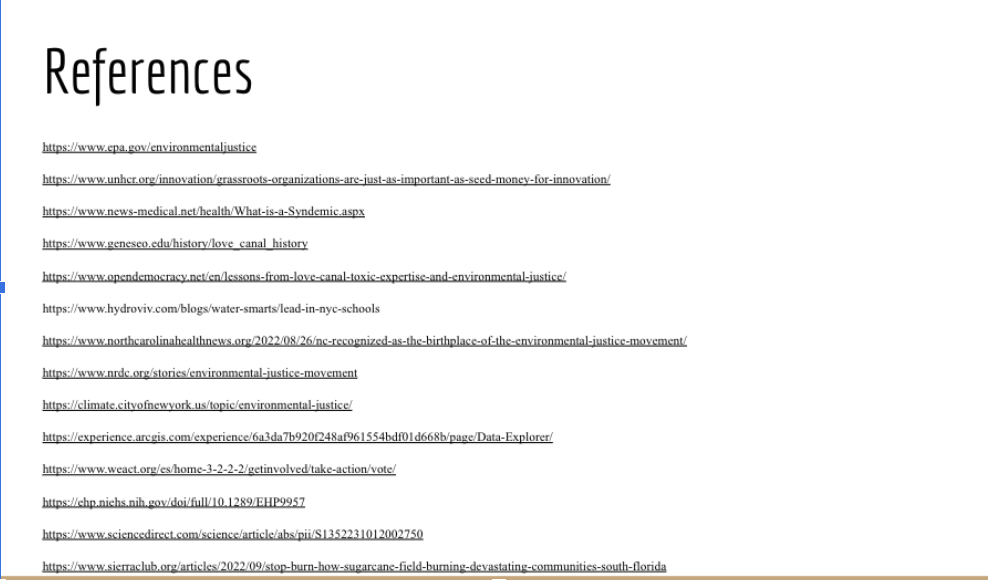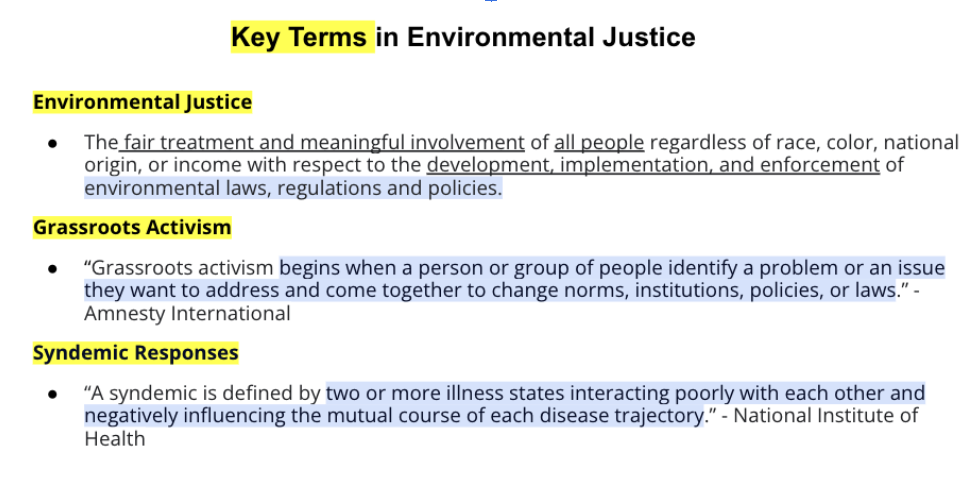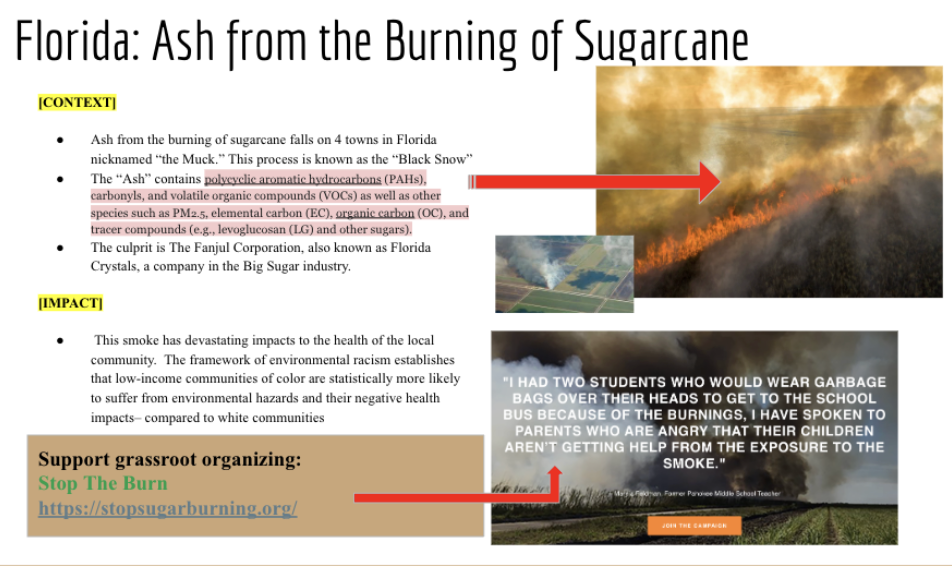Presentation on United States Case Studies on Environmental Justice at the Institute of Sustainability Politics
In my presentation at the Institute of Sustainable Energy Politics I presented two historical case studies– the discovery of toxic waste in a residential area of Love Canal, in Niagara Falls, New York as well as the discovery of toxic waste in Warren County North Carolina. The events that transpired at Love Canal are paramount to the foundation of the idea of Environmental Justice at the level of a national consciousness. In the 1970s, residents of the community “Love Canal '' discovered that their neighborhood was built on what was formerly a toxic waste dump. In the following years, residents of this area suffered from widespread health issues that resulted in deaths and the evacuation of residents. Later, chemicals such as Benzene, Dioxins, Toluene, Trichloroethylene (TCE), as well as Polychlorinated Biphenyls (PCBs) would be discovered at this site. As a result, this disaster brought national attention to the danger of environmental hazards. This spurred both federal and state initiatives such as the creation of the “Superfund” program to combat these issues. The Superfund Program, also known as the Comprehensive Environmental Response, Compensation and Liability Act was established by the government to aid in the cleanup of sites that had been contaminated and posed danger to the health of their residents.
My second case study took place in Warren County, North Carolina. In 1982, the residents of Warren County started historic protests against the practice of dumping toxic PCB waste in their communities. Residents experienced health impacts such as liver damage, immune system suppression, endocrine system suppressors, and skin issues. These protests were recognized as the birth of Environmental Justice because they highlighted how disproportionately communities of Color, such as Warren County, were impacted by environmental hazards. In response to these protests, U.S President Bill Clinton signed Executive Order 12898 which focused on addressing these concerns. This policy led to the founding of programs within the Environmental Protection Agency (EPA) , Housing and Urban Development Department (HUB), however, many of these programs suffered from funding restraints.
Additionally, to connect these topics to my lived experiences, I covered stakeholders in the current fight for environmental justice in New York City, the place where I call home during my academic year. I outlined a few of many current environmental concerns within the city– air quality, the urban heat island effect, and lead poisoning that are impacting citizens. Air quality is a crucial issue in many low-income communities located in the Bronx and parts of Brooklyn and Queens that are located near industrial zones and waste transfer stations. I brought up how Environmental Justice should be incorporated into discussions around policy– such as in the conversation surrounding Congestion Pricing in New York City. Furthermore, the Urban Heat Island Effect stems from the lack of greenspace in many communities of color– this leads to these populations experiencing temperatures that are higher than those in other areas. Finally, Lead Poisoning has appeared from NYC’s aging housing stock which contains lead-based paint and has also been found in the water of certain schools in low-income neighborhoods.
Finally, I presented an Environmental Justice issue that takes place close to my hometown– the burning of sugarcane in South Florida. This process of burning sugarcane to harvest it releases noxious gasses such as polycyclic aromatic hydrocarbons (PAHs), carbonyls, and volatile organic compounds (VOCs), PM2.5, elemental carbon (EC), (OC), and tracer compounds. This smoke has resulted in the devastating health impact of the consequences. To combat these vile practice, Grassroots organizations such as “Stop The Burn” has and continues to fights for the health and equality of workers and civilians.



Please sign in
If you are a registered user on Laidlaw Scholars Network, please sign in